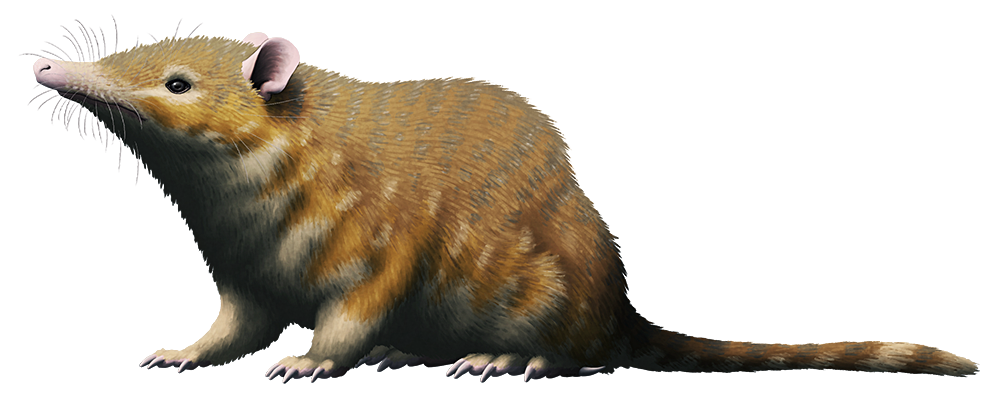It’s finally time for “Almost-Living” Fossils Month!
There are various modern species that we call “living fossils” because they’ve survived for very long periods of geological time, but there are also plenty of long-lived and successful groups that didn’t quite manage to make it to the present day.
For all of August I’ll be doing six posts on this topic a week (taking a break on Sundays), and the basic criteria for entries are that a featured organism has to be part of a group that:
• originated in the Mesozoic or earlier
• existed for at least 50 million years
• and survived through the end-Cretaceous mass extinction, only to go extinct later in the Cenozoic
So, let’s begin with…

The Saint Bathans Mammal
Dating to the mid-Miocene, about 19-15 million years ago, this little mammal was discovered in the Saint Bathans fossil deposits in the South Island of New Zealand, and was probably the size of a large shrew, around 10cm long (4″). It doesn’t have an official scientific name yet, but its fragmentary remains might represent something very special.
Not only was it a terrestrial mammal living at a time when none were thought to inhabit New Zealand at all, but it also doesn’t seem to fit into any known group of mammals. It’s definitely not a placental or marsupial or monotreme, and it doesn’t match any of the other “archaic” groups – so it could represent an entirely new lineage we didn’t even know existed.
At best it’s been classified as a theriiform, belonging somewhere between eutriconodonts and multituberculates in the mammal family tree. This means it would have to be part of a group with a very long ghost lineage going all the way back to the Late Triassic or Early Jurassic (~220-190 mya). Whatever it actually was, its ancestors were probably already present on New Zealand when the islands split away from Gondwana in the Late Cretaceous (~85 mya), and must have remained isolated there for tens of millions of years more.
It’s unknown how much closer to present day these mysterious archaic mammals actually survived, but it’s possible they were one of the casualties during the Middle Miocene disruption extinction about 14 million years ago, when the relatively warm climate suddenly cooled. And then land mammals were completely absent from New Zealand until the arrival of humans ~750 years ago.
(It’s also worth noting that the fossils of the Saint Bathans mammal were described over ten years ago, and our knowledge of ancient mammals and their evolutionary tree has changed a lot in that time. New studies or more fossil material might reveal the Saint Bathans mammal to actually be one of the very last survivors of an already-known group, but that would still make it an amazing and unique discovery.)
